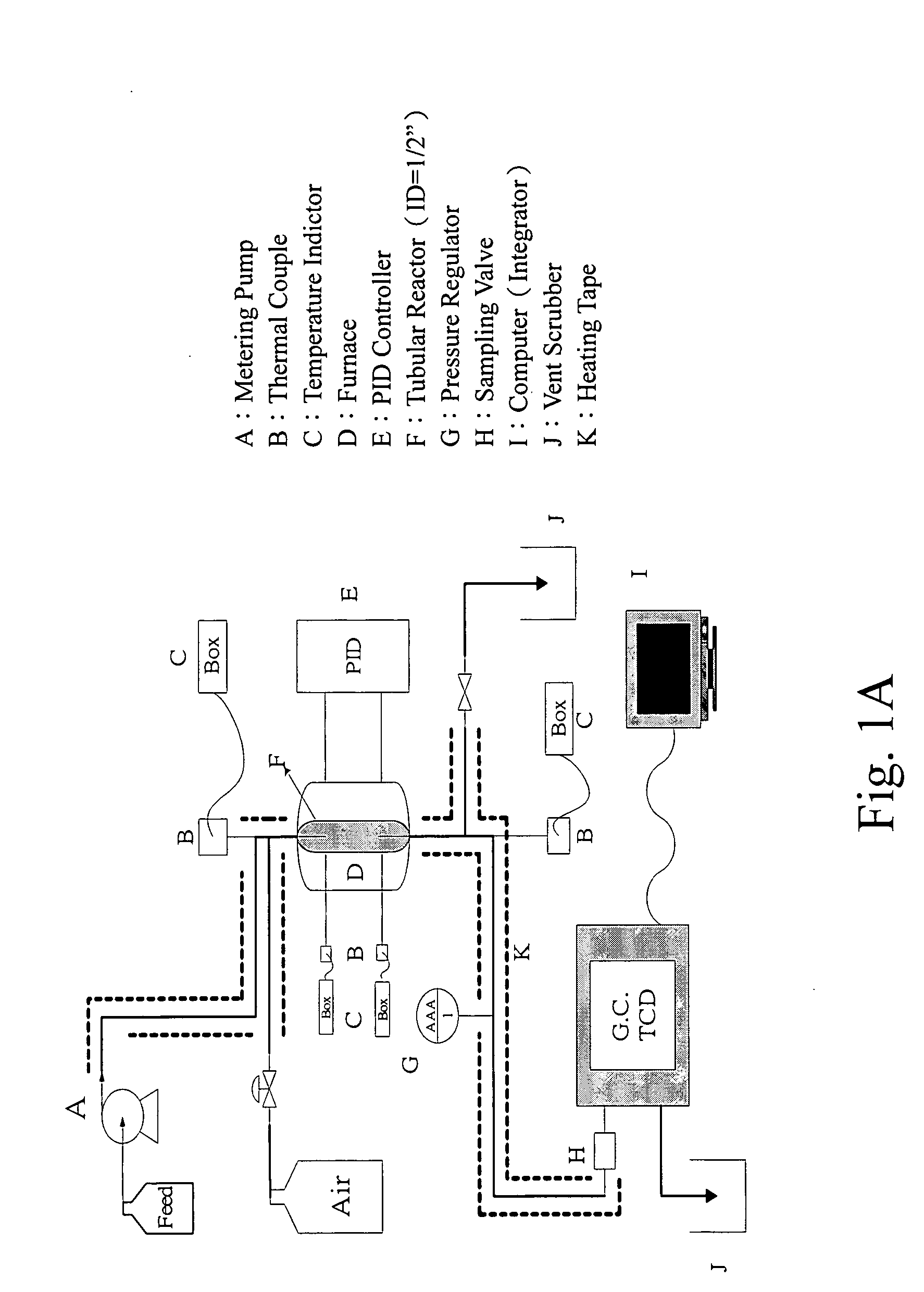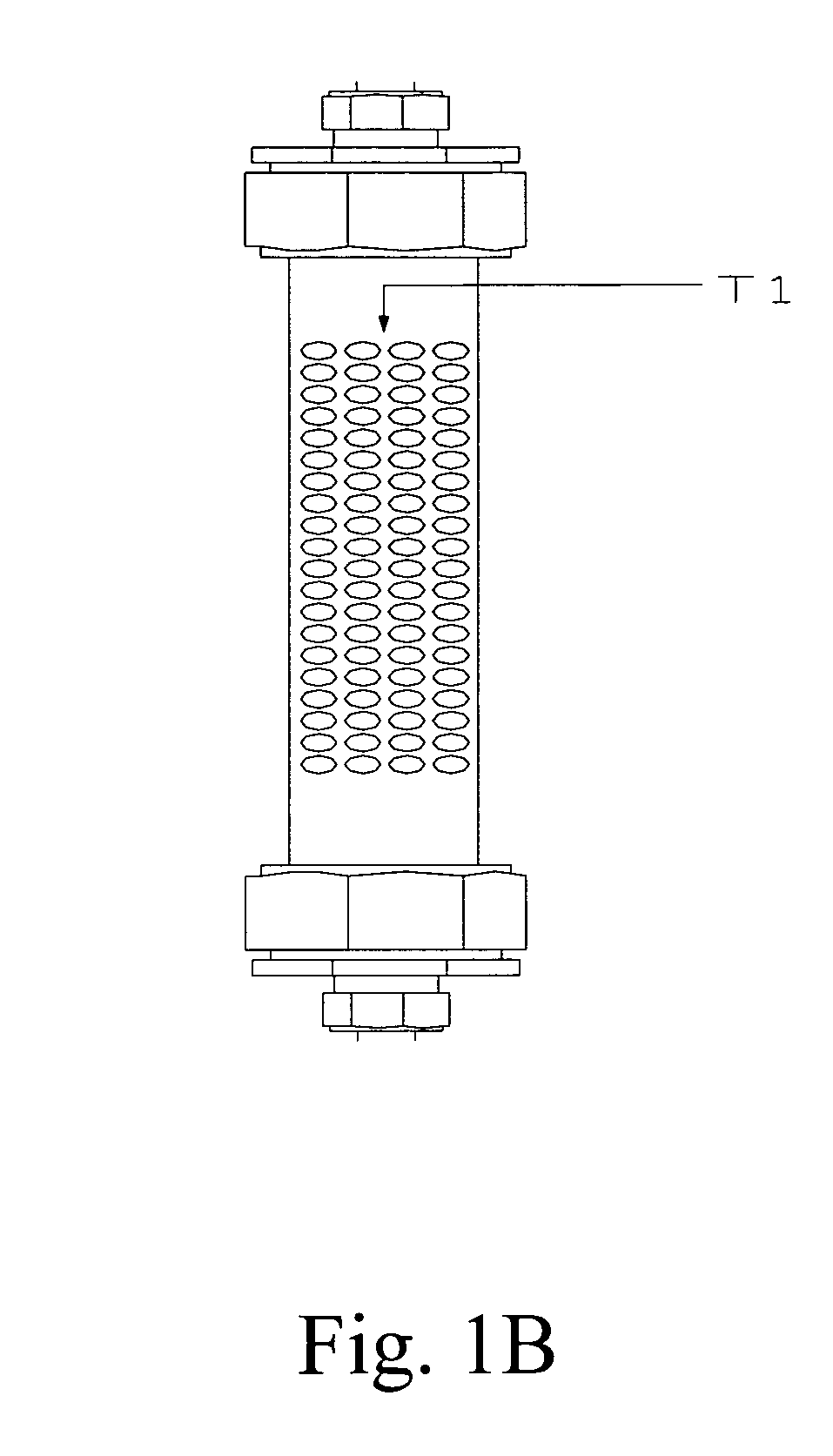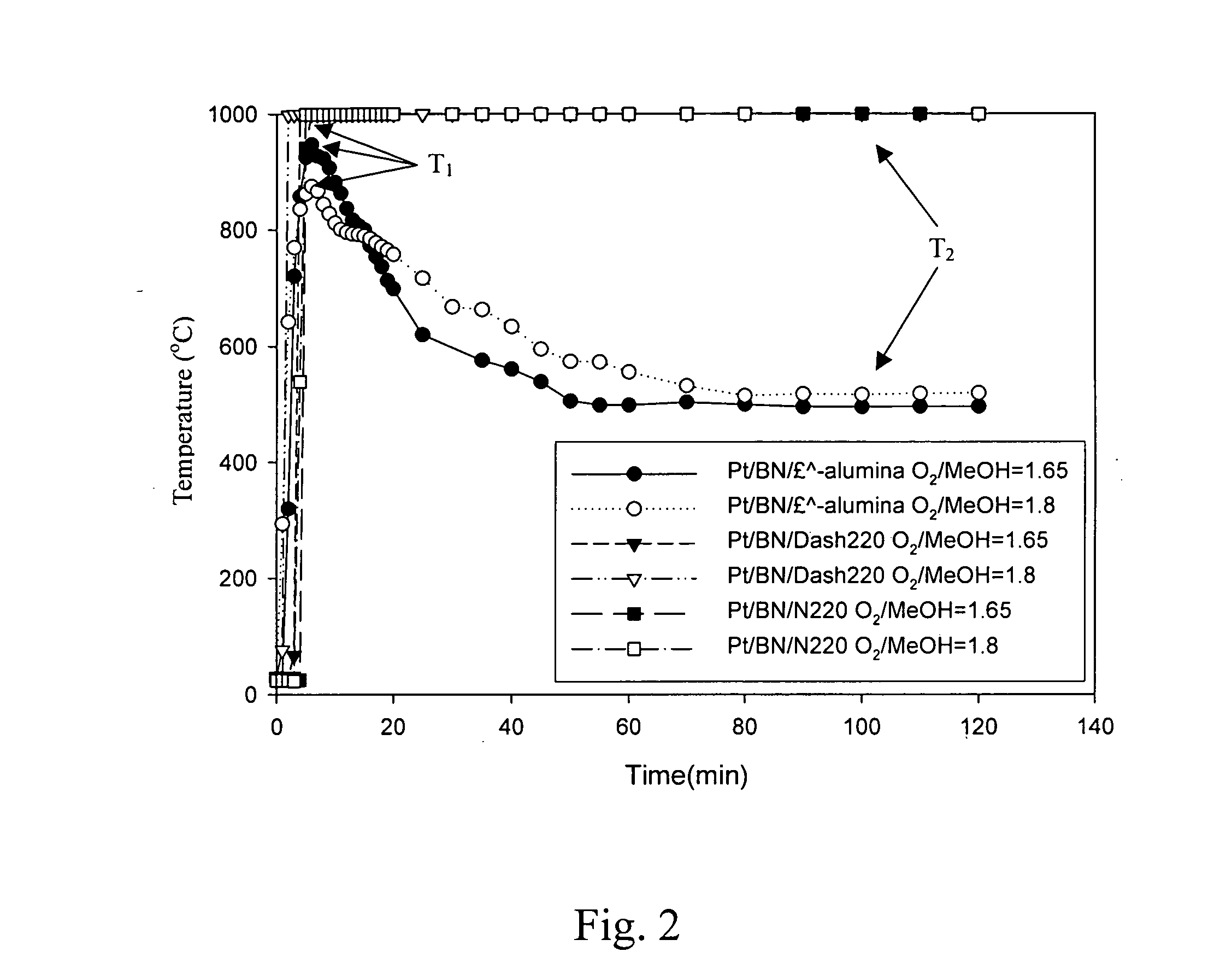Method and substance for reactive catalytic combustion
- Summary
- Abstract
- Description
- Claims
- Application Information
AI Technical Summary
Benefits of technology
Problems solved by technology
Method used
Image
Examples
example 1
Preparation of Supported Pt / BN Catalyst
[0044] One gram (1 g) of H2PtCl6.6H2O [Hexachloroplatinic acid hexahydrate, MWt=517.7, Pt:0.376 wt %] was dissolved in a small quantity of methanol to form a total volume of 12 cc. This solution is then added drop wise onto 10 g of h-boron nitride. The incipient dry mass was then heated at 70° C. to dry under an infrared lamp (250 W). It was then transferred into a steel reactor tube and heated at 300° C. with an air flow of 15 cc / min for 2 hr. The BET surface area of the catalyst was 49 M2 / g, and the Pt-loading was 3.7% wt
example 2
Preparation of the Alumina Supported Pt / BN Catalyst
[0045] Five grams (5 g) of a stable porous supporting material in sizes of 8-16 mesh, such as γ-alumina, or an industrial oxidation catalyst itself was added with small volume of methanol equivalent to the pore volume of the support. Then, one gram (1 g) of the Pt / BN catalyst from Example 1, was suspended in 3 cc of methanol, and the paste was then dispersed onto the supporting material under a mild stirring with a glass rod. The mixture is first dried at 70° C. under an infrared lamp and then further heated to 300° C. under an air stream of 15 cc / min for two hours (2 hr). The BET surface area of this supported catalyst, PtBN / γ-Al2O3, was 170 M2 / g.
[0046] The same procedure was used to prepare a host of supported Pt / BN with zirconia and two commercial oxidation catalysts, N220 and DASH-220. The surface properties are shown in Table 1.
TABLE 1Surface properties of supported Pt / BN catalystsBefore oxidation reaction30 Hr after oxidat...
example 3
Preparation of Supported PtBN / ZrO2 Using Mixed Solvent of Methanol and DMF
[0047] Five grams (5 g) of zirconia tablet (Daiichi Kigenso Kagaku Co.,RSC-HP grade, BET surface area, 56.2 M2 / gr, www.dkkk.co.ip, Osaka Japan, 81-6-6231-3835) in sizes of 2×3 mm, was added with small volume of DMF equivalent to the pore volume of the support. Then, one gram (1 g) of the above catalyst, Pt / BN, was suspended in 3 cc of mixed solvents containing 20% vol of DMF in methanol, and the paste was then dispersed onto zirconia support under a mild stirring with a glass rod. The mixture is first dried at 100° C. under an infrared lamp and then further heated to 450° C. under an air stream of 30 cc / min for two hours (2 hr). The final PtBN / ZrO2 contained 0.18% wt of Pt metal and 4.8% wt of hBN promoter. Replacement of methanol with the mixed solvents of methanol and DMF results in a more homogeneous suspension and was easier to work. The same recipe and procedure was used to prepare PtBN / Al2O3.
PUM
| Property | Measurement | Unit |
|---|---|---|
| Temperature | aaaaa | aaaaa |
| Temperature | aaaaa | aaaaa |
| Fraction | aaaaa | aaaaa |
Abstract
Description
Claims
Application Information
 Login to view more
Login to view more - R&D Engineer
- R&D Manager
- IP Professional
- Industry Leading Data Capabilities
- Powerful AI technology
- Patent DNA Extraction
Browse by: Latest US Patents, China's latest patents, Technical Efficacy Thesaurus, Application Domain, Technology Topic.
© 2024 PatSnap. All rights reserved.Legal|Privacy policy|Modern Slavery Act Transparency Statement|Sitemap



